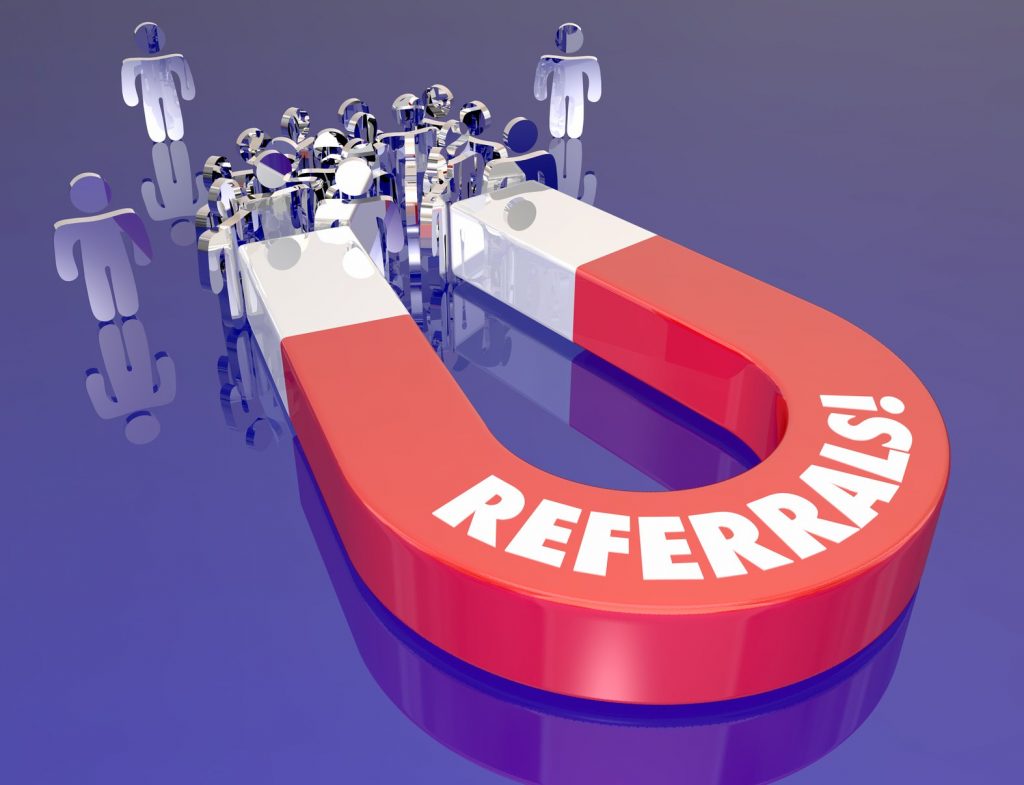
People like to do business with people they trust—and that’s why referrals from satisfied customers have always been such a powerful way of growing your business. Customer referrals can work for all types of businesses. Whether you have an accounting firm, a bakery, or a landscaping company, asking your customers to spread the word so you can get referrals is a smart idea.
What tactics do most small business owners use to get referrals and which ones actually work best? A new study, The State of Business Customer Referral Programs, polled both B2B and B2C business owners to find out. Here’s what you should know.
Most popular referral methods
The referral methods that business owners use most are:
- Lead forms—77%
- Email—73%
- Verbal—54%
- Social media—50%
- Shareable URLs—41%
- Print cards—18%
Most business owners in the study say the majority of their referrals come from social media (29%) and email (23%).
Best conversion rate
Social media may generate a large volume of referrals, but it’s not so effective at converting them. Far and away, verbal referrals have the highest conversion rate; 32% of them result in sales. After that are:
- Lead forms—19%
- Email—17%
- Print cards—12%
- Shareable URL—4%
- Social media—1%
RELATED: 3 Tips for More Word-of-Mouth Referrals
Incentives for making referrals
What types of incentives to business owners offer in return for referrals?
- Gift cards—52%
- Check—29%
- Bill credit—9.5%
- Merchandise—9.5%
Who makes referrals?
Overall, businesses are fairly successful at getting customers to give them referrals:
- 61% of customers make one referral
- 34% of customers make 2 to 10 referrals
- 5% of customers make 11 or more referrals
How can you get more referrals?
The majority of customers make one referral, but you can improve your referral rate by focusing on those customers who make a lot of referrals. That’s 40% of customers in the survey, so it’s a large target. When a customer gives you a referral, take note of what method worked. For example, if someone gave you an email referral, continue contacting them by email for additional referrals throughout the year.
You can also increase your success rate by focusing on customers whose referrals actually converted to sales. People are more likely to patronize companies that their friends and colleagues rave about. If Phillip referred Julio to your landscaping business after you landscaped Phillip’s yard, and Julio has you landscape his yard as well, the friends they have in common will see both yards and be more likely to use your services next time they are in the market for landscaping.
Maintain an active presence on social media. The more active your landscaping business is on social media, the more likely you are to be top of mind with a customer when a friend or colleague starts to talk about wanting to redo his backyard. Post useful content, like gardening tips, or content that shows your skills, like photos of your customers’ finished yards. Connect with past customers, especially those who have referred more than one person to you. These “super-referrers” are generally influencers within their own social circles (or like to think of themselves that way), making them more apt to give you additional referrals.
